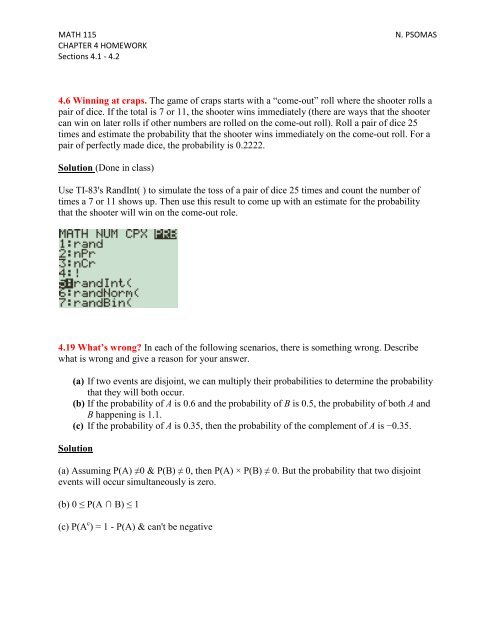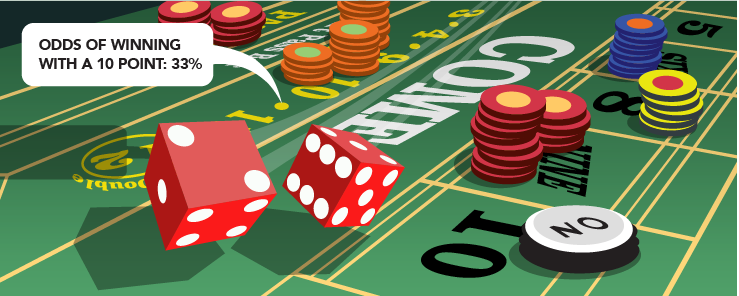Probability Of Winning Craps
In probability theory, the craps principle is a theorem about eventprobabilities under repeated iid trials. Let and denote two mutually exclusive events which might occur on a given trial. Then the probability that occurs before equals the conditional probability that occurs given that or occur on the next trial, which is

Finally, (d) show that the probability that a player wins a game of craps is exactly 244/495. I'm sure I can figure out (b) and (c) after I figure out how to do part (a). I know that the chance of rolling a 4 would be 1/12, but I'm pretty sure there has to be more to the probability than that. I broke it up into. Beginner craps players, if you can remember only one bet, make it the pass line bet. This is the starting bet for all craps games and has one of the lowest house edges at 1.41% and highest odds of landing (251 to 244 to be exact). This is one of the best bets craps players can make, with payout odds of 1 to 1.
The events and need not be collectively exhaustive (if they are, the result is trivial).[1][2]

Proof[edit]
- Since and are mutually exclusive, the craps principle applies. For example, if the original roll was a 4, then the probability of winning is / / + / = This avoids having to sum the infinite series corresponding to all the possible outcomes.
- These 5 simple tips on how to win at craps will improve your odds of winning while playing craps. There are 11 numbers possible with a pair of dice; some easier to roll than others. Those unfamiliar with the game of craps are usually put off by the large betting fields and seemingly endless rules and betting combinations.
Let be the event that occurs before . Let be the event that neither nor occurs on a given trial. Since , and are mutually exclusive and collectively exhaustive for the first trial, we have
and . Since the trials are i.i.d., we have . Using and solving the displayed equation for gives the formula
- .

Application[edit]
If the trials are repetitions of a game between two players, and the events are
then the craps principle gives the respective conditional probabilities of each player winning a certain repetition, given that someone wins (i.e., given that a draw does not occur). In fact, the result is only affected by the relative marginal probabilities of winning and ; in particular, the probability of a draw is irrelevant.
Stopping[edit]

If the game is played repeatedly until someone wins, then the conditional probability above is the probability that the player wins the game. This is illustrated below for the original game of craps, using an alternative proof.
Craps example[edit]
If the game being played is craps, then this principle can greatly simplify the computation of the probability of winning in a certain scenario. Specifically, if the first roll is a 4, 5, 6, 8, 9, or 10, then the dice are repeatedly re-rolled until one of two events occurs:
Since and are mutually exclusive, the craps principle applies. For example, if the original roll was a 4, then the probability of winning is
Calculating The Probability Of Winning Craps
This avoids having to sum the infinite series corresponding to all the possible outcomes:
Mathematically, we can express the probability of rolling ties followed by rolling the point:
The summation becomes an infinite geometric series:
which agrees with the earlier result.
References[edit]
Probability Of Winning Craps
- ^Susan Holmes (1998-12-07). 'The Craps principle 10/16'. statweb.stanford.edu. Retrieved 2016-03-17.
- ^Jennifer Ouellette (31 August 2010). The Calculus Diaries: How Math Can Help You Lose Weight, Win in Vegas, and Survive a Zombie Apocalypse. Penguin Publishing Group. pp. 50–. ISBN978-1-101-45903-4.
Notes[edit]
Probability Of Winning Craps
- Pitman, Jim (1993). Probability. Berlin: Springer-Verlag. p. 210. ISBN0-387-97974-3.